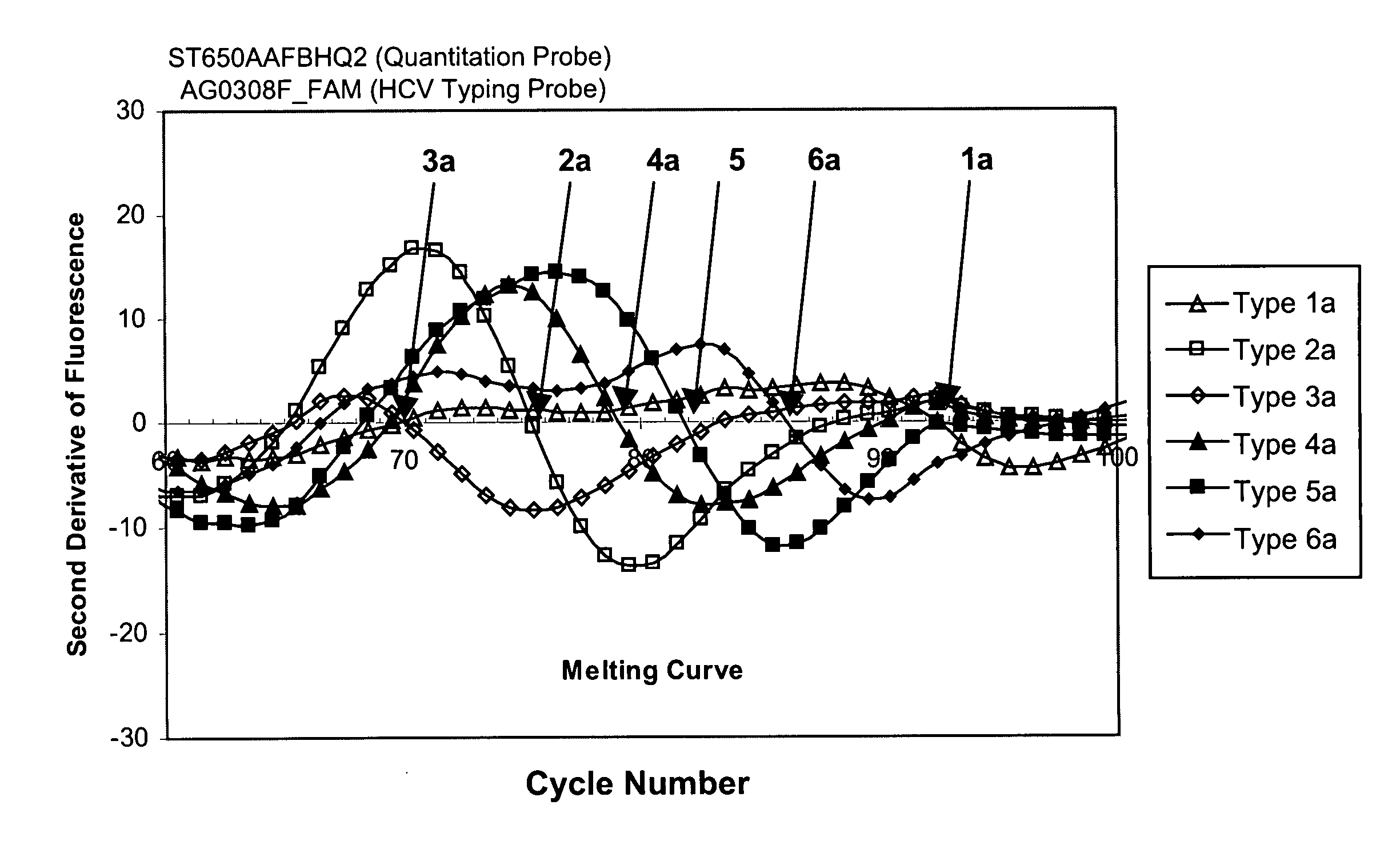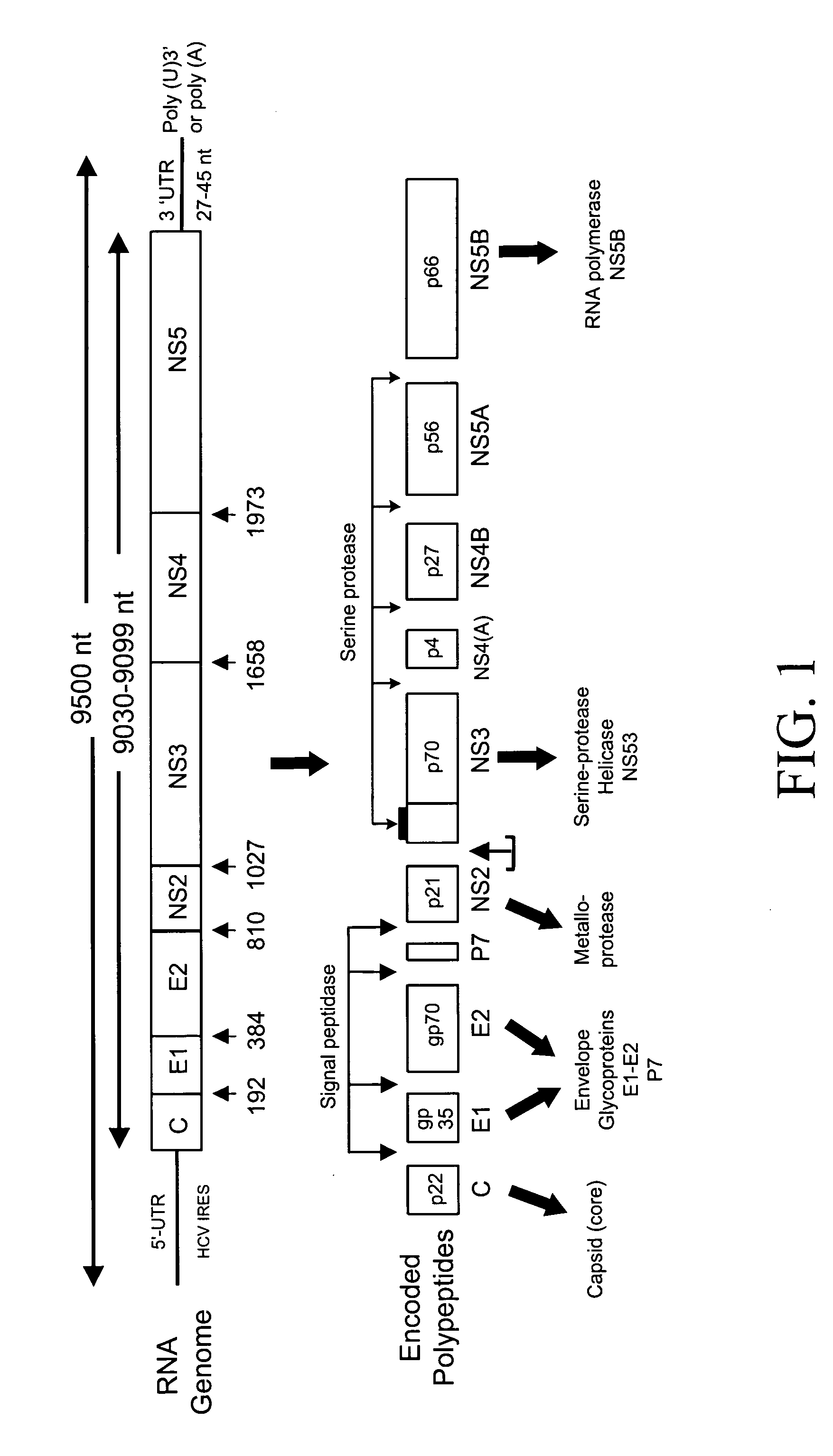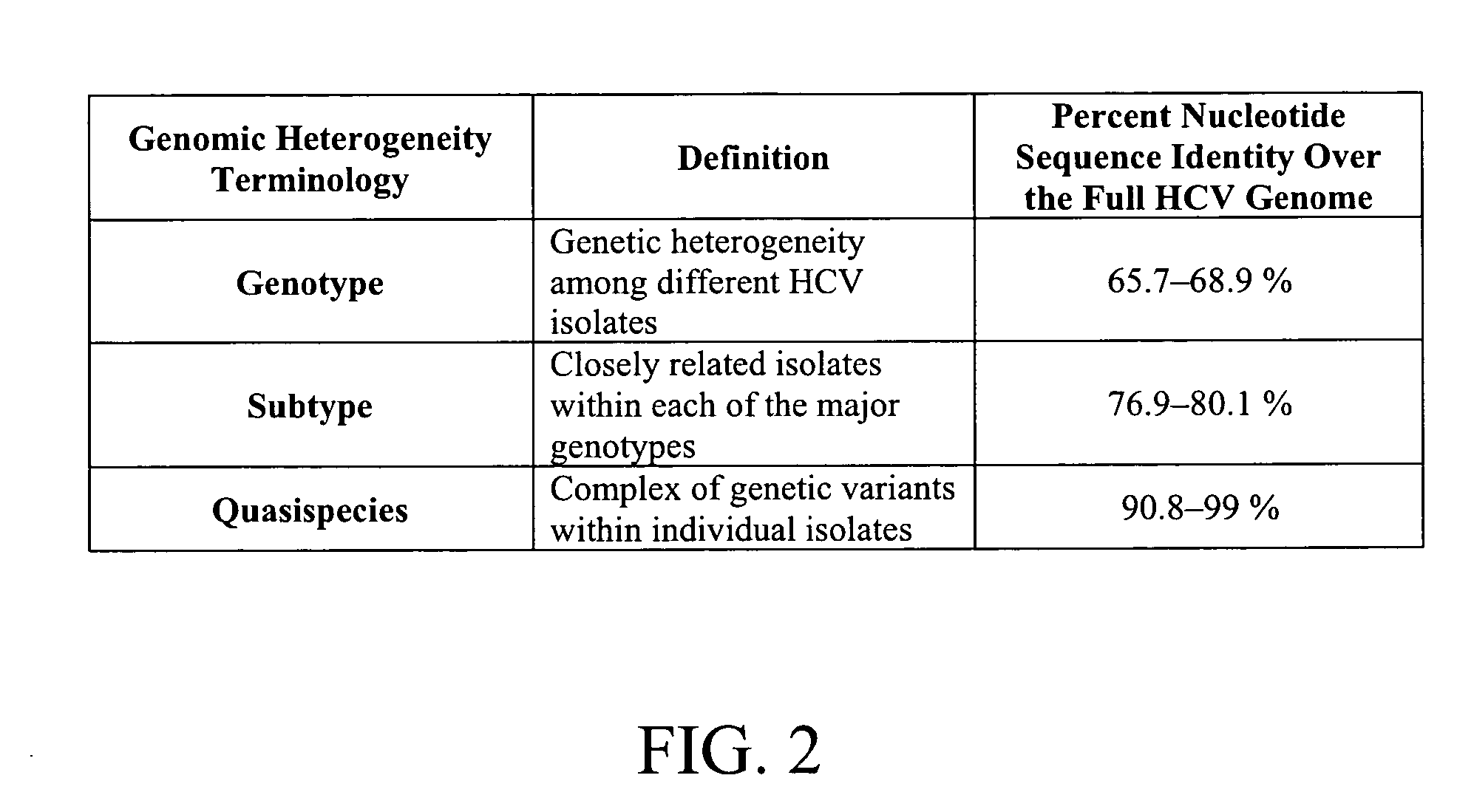Probes and methods for hepatitis C virus typing using single probe analysis
a technology of hepatitis c virus and probe analysis, applied in the field of viral diagnostic procedures, can solve the problems of inability to differentiate the ever-increasing number of known hcv types, difficult to develop simple diagnostic methods, and confusion in scientific literature, so as to reduce the detection of radiation and reduce light emission
- Summary
- Abstract
- Description
- Claims
- Application Information
AI Technical Summary
Benefits of technology
Problems solved by technology
Method used
Image
Examples
example 1
[0251] HCV Probe Melting Curve Analysis (HCV Typing) Using Synthetic HCV Target Sequences
[0252] The present example describes a melting curve analysis using one HCV typing probe and six synthetic templates derived from six different HCV types (shown in TABLE 1). The effectiveness of this probe to differentiate at least five genotypes and at least six subtypes was assessed.
[0253] A collection of suitable HCV typing probes were designed and synthesized. Each of these probes hybridizes to a domain within the 5′-UTR of the HCV genome showing sequence heterogeneity among at least five different genotypes and at least six different subtypes (see, FIG. 5). The probe AG0203A was used in the analysis (see probe sequence provided in FIG. 6; and SEQ ID NO: 8). The probe contained a single fluorescein (FAM) label. This probe was alternatively hybridized with each of the six different synthetic single-stranded templates corresponding to various HCV types. The sequences of these synthetic templ...
example 2
[0265] HCV Probe Melting Curves (HCV Typing) Using RT-PCR HCV Amplicons with Post-PCR Addition of Typing Reagents
[0266] This example describes a melting curve HCV typing analysis using HCV amplicons produced by RT-PCR, followed by the addition of the HCV typing melting curve reagents. This system is considered an “open-tube” system, as the experiment requires access to the RT-PCR reaction products to add the typing reagents (including the typing probe). The AG0203A-FAM probe that was successfully used in EXAMPLE 1 is used in this EXAMPLE. The effectiveness of this probe to differentiate at least five HCV genotypes or at least six different HCV subtypes was assessed using test material generated by amplification of an RT-PCR product.
[0267] Template RNA for generating HCV amplicons by RT-PCR was derived by in vitro transcription from plasmids carrying HCV genomic material inserts corresponding to types 1a, 2a, 3a, 4a, 5a and 6a. The sequences of these inserts correspond to the conse...
example 3
[0277] HCV Probe Melting Curves (HCV Typing) Using RT-PCR HCV Amplicons in a Closed-Tube System
[0278] This example describes a melting curve HCV typing analysis, where the HCV target material is an amplicon generated by an RT-PCR amplification reaction, and furthermore, where the RT-PCR and the melting curve analysis are conducted in a single reaction mix without the need for any additional manipulation of reagents, e.g., addition of the HCV typing probe. This system is considered a “closed-tube” system, as the reaction mixture does not require any further manipulation other than the external thermocycling conditions and fluorescence measurements. A number of probes were used in this analysis. The effectiveness of the various probes to differentiate various HCV amplicons generated by RT-PCR was assessed.
[0279] Template RNA for generating HCV amplicons by RT-PCR was derived by in vitro transcription from plasmids carrying HCV genomic material inserts corresponding to genotypes 1a, ...
PUM
| Property | Measurement | Unit |
|---|---|---|
| temperatures | aaaaa | aaaaa |
| elongation | aaaaa | aaaaa |
| Tm | aaaaa | aaaaa |
Abstract
Description
Claims
Application Information
 Login to View More
Login to View More - R&D
- Intellectual Property
- Life Sciences
- Materials
- Tech Scout
- Unparalleled Data Quality
- Higher Quality Content
- 60% Fewer Hallucinations
Browse by: Latest US Patents, China's latest patents, Technical Efficacy Thesaurus, Application Domain, Technology Topic, Popular Technical Reports.
© 2025 PatSnap. All rights reserved.Legal|Privacy policy|Modern Slavery Act Transparency Statement|Sitemap|About US| Contact US: help@patsnap.com



